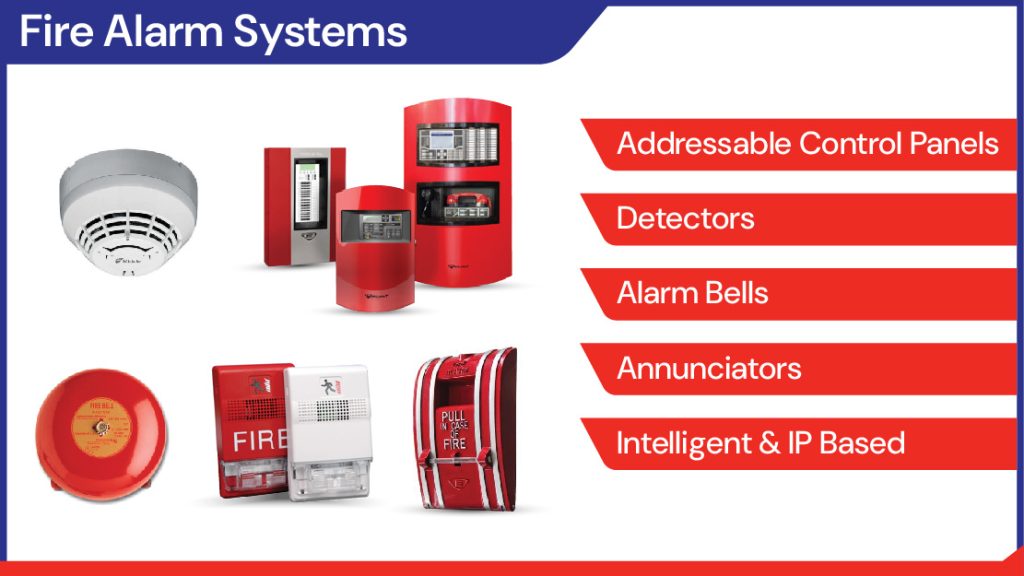
The fire alarm system is designed to detect early signs of fire in a building, particularly in multi-storey buildings and neutral buildings. This system includes various components such as fire alarm sensors, fire alarm annunciators, and emergency fire alarms to enhance safety measures.
With the presence of a smart fire alarm system, building security teams can quickly locate the exact area affected by fire. The integration of a fire alarm and sprinkler system, including a fire alarm sprinkler system, ensures that the fire is suppressed efficiently. Additionally, installing a ceiling fire alarm and a wireless fire alarm system provides reliable protection while complying with NFPA fire alarm standards. This enables a faster evacuation and extinguishing process, minimizing potential damage and risks.
Fire Alarm Supplier and Contractor: Complete Fire Alarm System Solutions
As a trusted fire alarm system supplier and contractor, we provide high-quality fire safety products and expert fire alarm installation services to ensure buildings meet safety regulations.
Our team specializes in fire alarm system installation, ensuring all components are properly integrated for maximum protection in businesses, industrial facilities, and residential properties.
Whether you need a new fire alarm system installation, an upgrade, or maintenance, our experienced professionals deliver reliable and compliant solutions tailored to your specific needs.
Our installation services include:
Addressable Fire Alarm Control Panels
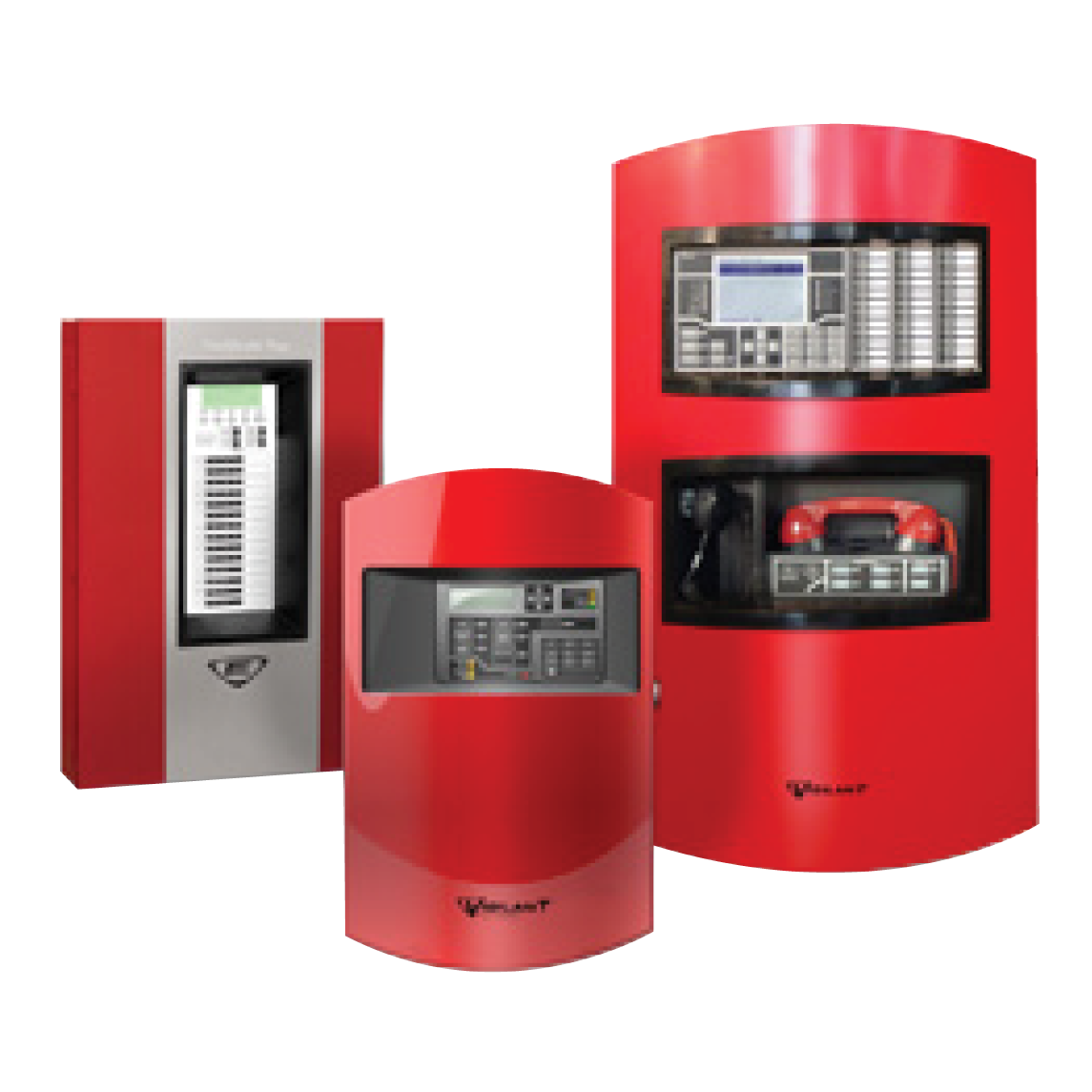
Specifications
- One Class A or Class B intelligent device loop is standard, with optional loops expanding the addressable fire alarm control panel (FACP fire alarm) capacity to 1,000 devices.
- 24-line by 40-character backlit LCD capable of displaying eight simultaneous events for enhanced monitoring within the addressable fire alarm system.
- Optional voice evacuation and firefighter’s telephone for improved emergency communication.
- Part of an end-to-end audio solution suitable for low-frequency signaling in sleeping areas, fully compatible with addressable fire alarm systems.
- Optional network interface slots are located on the back of a swingable mounting chassis, allowing seamless integration with an addressable control panel.
- Electronic addressing with automatic device mapping simplifies installation and device recognition within the addressable fire control panel.
- Optional Ethernet port for diagnostics and programming enhances system accessibility and remote configuration.
- Supports strobe synchronization for improved visual alerting in emergency situations.
- Supports up to 30 R-Series remote annunciators with either Class A or Class B wiring, ensuring comprehensive coverage within an addressable fire panel.
- Networkable with up to 24 VM control panels, enabling the monitoring of up to 24,000 intelligent points, making it a scalable addressable panel fire alarm system.
- Patented Voltage Boost™ technology delivers constant voltage on NAC and AUX circuits — even at low battery power, enhancing the reliability of the addressable fire alarm panel.
- 10 Amp UL-listed power supply with universal 94 to 264 Vac input voltage for worldwide compatibility.
- Integrated Carbon Monoxide gas sensing with V-PCOS detectors, featuring distinct audible signaling for added safety.
- Four on-board Notification Appliance Circuits for efficient alarm signaling.
- Room for three optional front panel LED/Switch modules, improving system control within the addressable fire alarm control panel.
- Optional Ethernet interface for advanced networking capabilities.
- UL2572; UL864 UUKL; UL 864 Listed for releasing applications using GSA-REL, ensuring compliance with industry standards for an addressable fire alarm system.
- Optional earthquake hardening with a seismic Importance Factor of 1.5, ensuring durability and stability in critical installations.
Fire Detectors
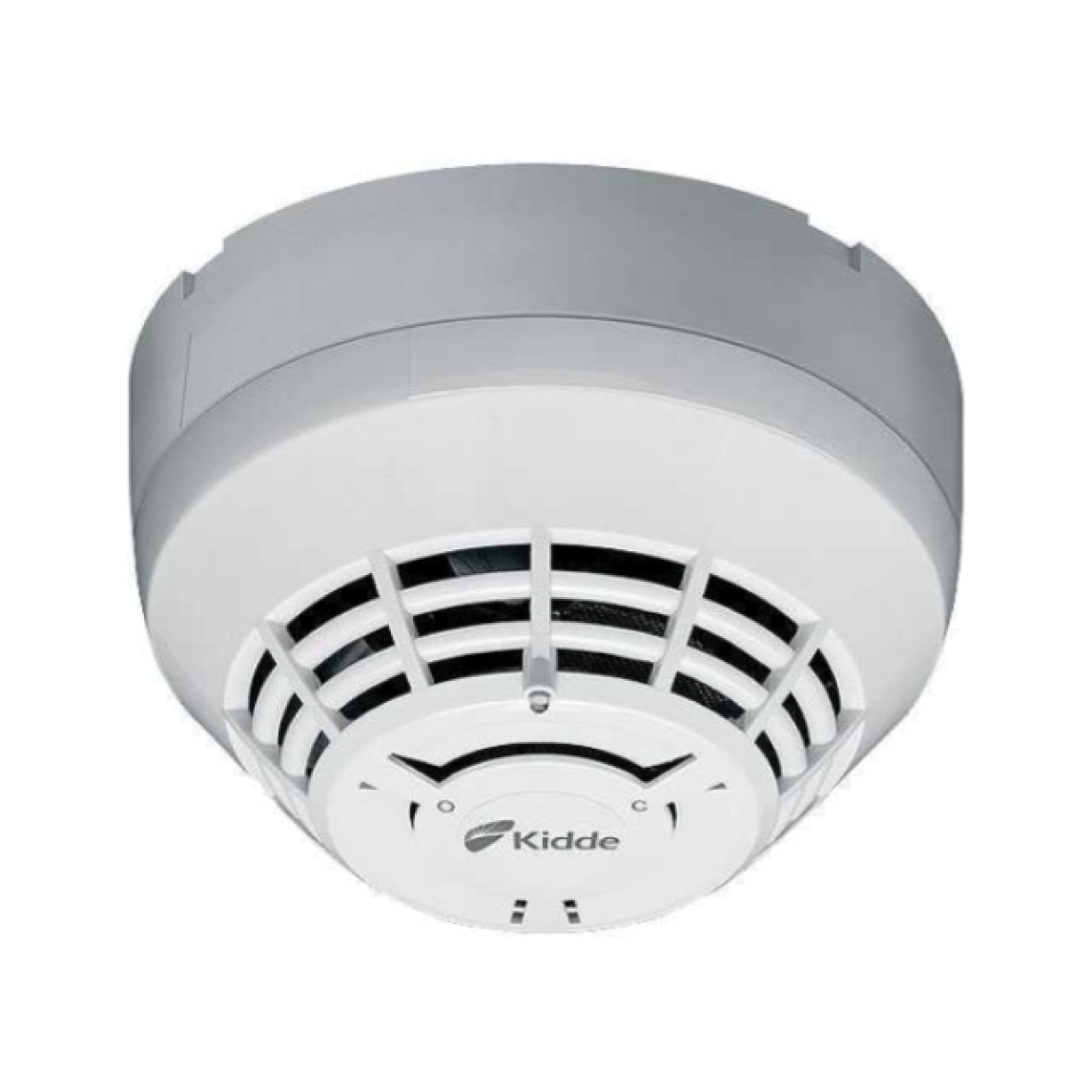
Specifications
- Next-generation fire detection system with advanced sensing technology.
Integrates optical fire detector sensor with carbon monoxide detection for enhanced safety. - Wide 0.53 to 3.94 %/ft. (1.7 to 12.35 %/m) smoke obscuration, ensuring accurate smoking detector performance.
- Sensor markings provide easy testing identification, improving maintenance of the fire detection alarm system.
- Uses existing wiring for seamless integration into any fire detection and alarm system.
- Automatic device mapping simplifies setup and enhances the efficiency of the wireless fire detection system.
- Ground fault detection by module ensures reliable operation within the fire and gas detection system.
- Supports up to 250 total addresses per loop, making it ideal for large-scale fire detection system deployments.
- Two levels of environmental compensation for optimized fire alarm detector performance.
- Two levels of dirty detector warning to maintain accuracy in fire detector operation.
- Up to twenty pre-alarm settings for early warning in a fire detection and alarm system.
- Five sensitivity settings for adaptable flame detection sensor response in various environments.
- Non-volatile memory retains crucial system settings, ensuring consistent smart fire detector operation.
- Electronic addressing allows for easy configuration and scalability of the fire detection alarm system.
- Environmental compensation to adjust for changing conditions and enhance photoelectric fire alarm accuracy.
- Automatic day/night sensitivity adjustment optimizes fire alarm detector responsiveness based on lighting conditions.
- Bicolor (green/red) status LED provides clear status indication for the smoking alarm system.
- Standard, relay, fault isolator, and audible mounting bases for versatile fire detector installation.
Fire Alarm Bells
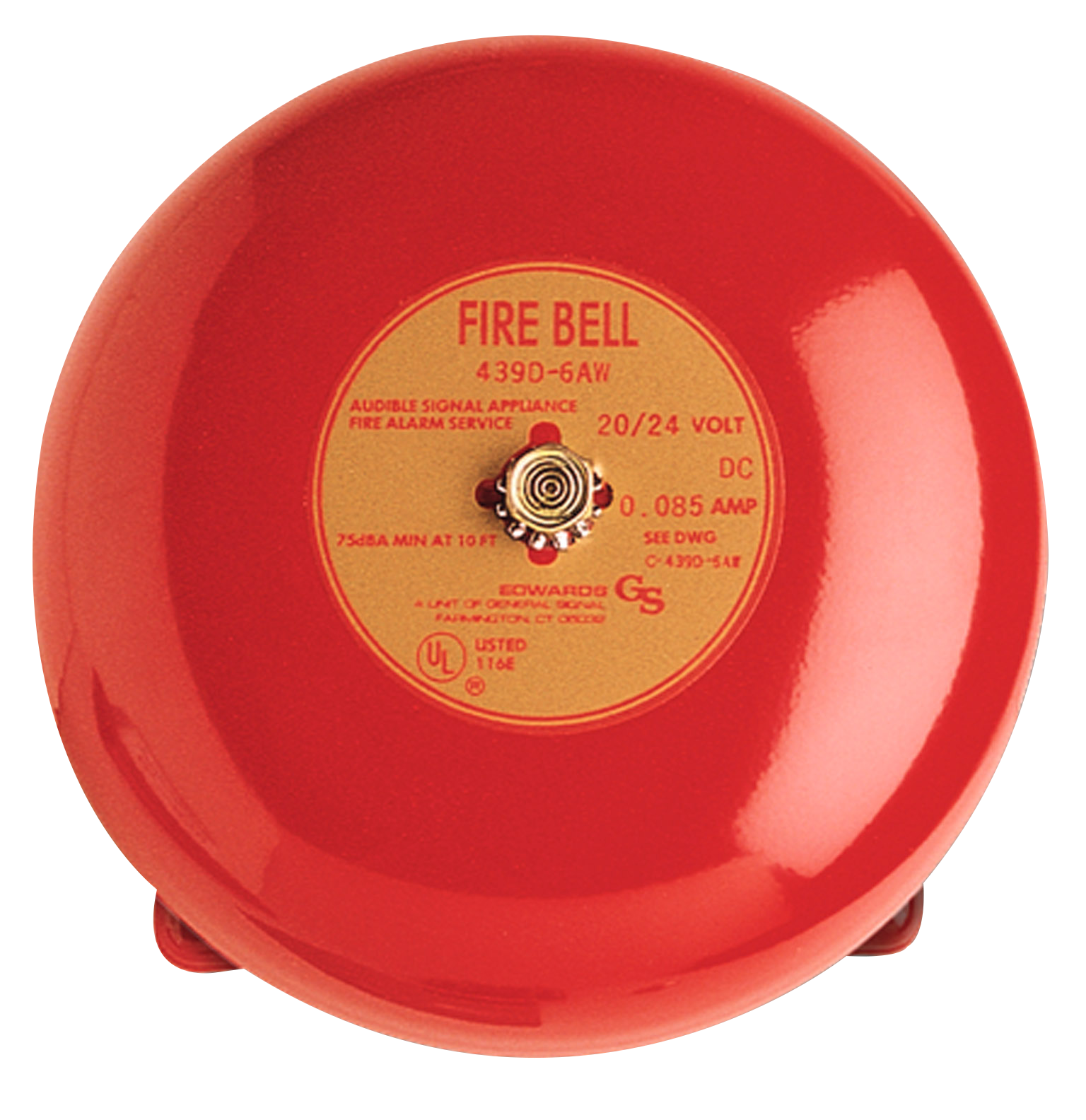
Specifications
- Fire alarm bells available in vibrating and single-stroke models for reliable signaling.
- Offered in fire bell sizes of 6-inch (150mm), 8-inch (200mm), and 10-inch (250mm) to suit different installation needs.
- Available in red or gray finish to match various alarm bell fire alarm system aesthetics.
- Rugged, compact mechanism ensures durability in demanding environments.
- Heavy-duty cast housing provides long-lasting protection for the fire alarm bells.
- Low power drain for energy-efficient operation within any fire bell system.
- Wide voltage selection for flexible compatibility with various alarm bell fire alarm setups.
- Suitable for both indoor and weatherproof applications, enhancing the versatility of fire alarm bells.
Horns and Strobes
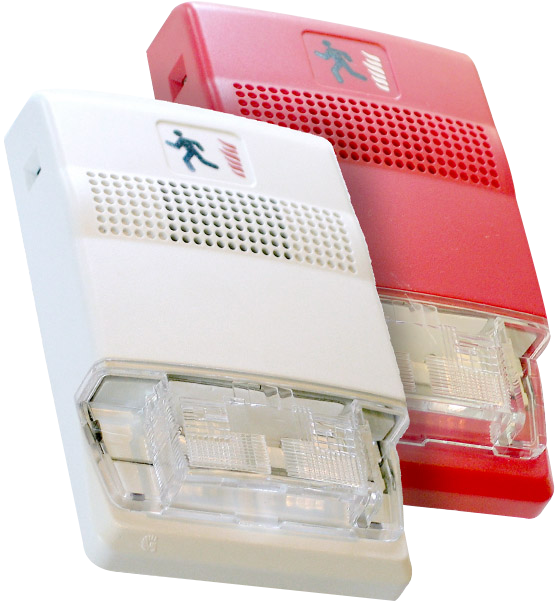
Specifications
- Unique low-profile design enhances the aesthetics of fire alarm system strobe lights while ensuring reliable performance.
- The most compact UL-1971/ULC-S526 listed fire alarm strobe light available for efficient emergency signaling.
- Ultra-slim design protrudes less than one inch, making it an ideal choice for modern alarm strobes.
- Attractive appearance with no visible mounting screws for seamless integration into any fire alarm horn and strobe system.
- Selectable 15, 30, 75, or 110 cd fire alarm strobe light output to meet various safety requirements.
- Adjustable high (default) or low dB fire alarm horn output for adaptable alerting.
- Choose between temporal (default) or steady fire alarm horn output to fit different alarm settings.
- Public mode flash rate (default) or private mode temporal flash for flexible alarm strobes operation.
- Fixed 15/75 cd model available, ensuring compliance with fire safety regulations.
- ECS/MNS models available to support mass notification and emergency communication.
- Easy to install and fits standard 1-gang electrical boxes—no trim plate needed for quick setup of fire alarm horn and strobe devices.
- Optional trim plate accommodates oversized openings, providing a clean installation for fire alarm system strobe lights.
- Pre-assembled with captive hardware for hassle-free mounting.
- #12 AWG terminals—ideal for long runs or existing wiring
- Unparalleled performance
- Industry’s most even light distribution
- Meets tough synchronizing standards for strobes
- Single microprocessor controls both horn and strobe
- Independent horn control over a single pair of wires
- Highly regulated in-rush current
- Multiple frequency tone improves sound penetration
- Field-programmable temporal strobe output option
Manual Pull Stations
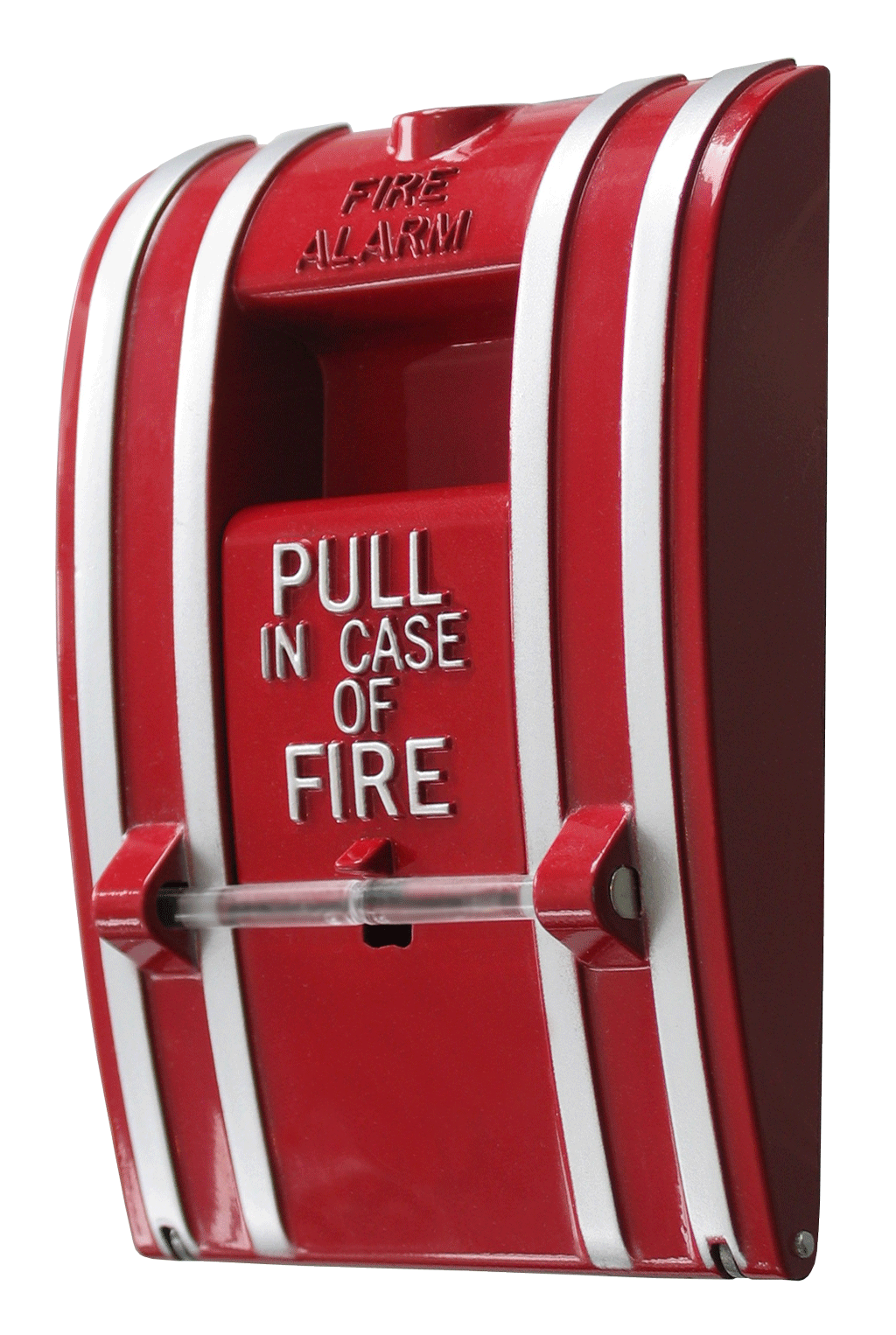
Specifications
- Fire alarm pull station with a pull lever for quick and efficient activation.
- Simple, positive operation ensures ease of use in emergency situations within any fire alarm system pull station setup.
- Integrated break glass feature enhances safety and reliability in manual fire pull station operation.
- Attractive, streamlined design blends seamlessly with modern fire pull stations.
- Requires less than 5 lb pull force, complying with ADA standards for accessible manual pull station fire alarm system activation.
- Solid, die-cast metal construction provides durability and long-lasting performance for alarm pull station reliability.
